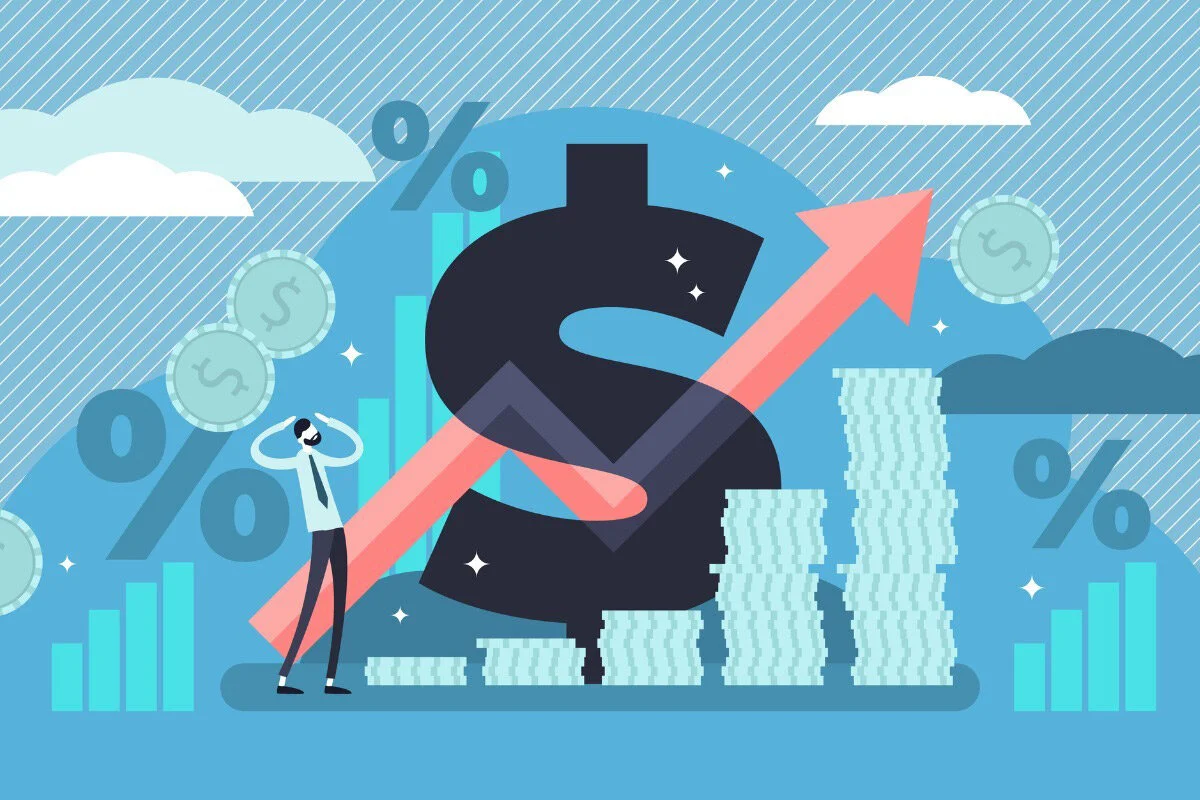Two months ago, I wrote about the potential for prices to rise. Those fears came to fruition in April, as the Consumer Price Index (CPI), which measures what people pay for all goods and services, jumped by 4.2 percent from a year ago. It was the strongest annual increase since 2008. The core CPI, which strips out the volatile food and energy components, increased by 3 percent from a year ago, a 25-year high.
Let’s not conflate this report with the Colonial Pipeline issue, the reporting period for the CPI occurred PRIOR to that shutdown. There are a few reasons why prices are rising: (1) We are comparing where we are today with the depressed numbers from the pandemic onset last year, when the economy shut down and prices plunged, (2) Supply chain issues, which were a bit shaky prior to the pandemic due to trade disputes, got worse as producers had to deal with sudden changes in safety procedures and a surge in consumer demand for goods, and (3) Demand is jumping, as vaccinations occur and many are flush with cash.
My favorite example of how inflation has increased seemingly out of nowhere is lumber. Early in the pandemic, sawmills shut down production, in anticipation of an economic slump. They may have been right about the slump, but they had no way of anticipating that it would be short-lived, at least when it came to housing. Demand went from zero to sixty in weeks, as people sought to remodel or build new homes. A year later, the price of lumber is up over 400 percent, which has added nearly $36,000 to the price of an average new single-family home, according to NAHB.
Similarly, last spring chip manufacturers made what they believed was a smart decision: concentrate on producing semiconductors for consumer electronics, which would no doubt boom as the country was sitting at home in front of screens. That decision came at the expense of making chips for vehicles, which many believed would be hit hard by the pandemic. Few anticipated that the pandemic would spur a broad-based auto buying spree. Today we are seeing prices surge for new, used and rental car and trucks and as more people are driving, gas prices are up nearly 50 percent from a year ago, the largest annual increase in more than a decade.
For context, even with the 12-month surge, inflation remains below where it was for much of the 2000s and also where it was before the pandemic. Compared with two years ago, prices were up a less worrisome 2.2 percent in April. But we are humans and are often influenced by what has just happened. Behavioral economists call this “recency bias”, which means we believe that what has just happened will continue to occur in the future.
And when it comes to inflation, recency bias can make matters worse, just look at the nervous people who were filling cars and gas cans to the hilt, just in case. There was no reasoning with people who were fearful of rising prices, amid limited supply, consumers drove prices even higher. Economists worry that if these feelings spread beyond the gas pumps to other parts of the economy, then inflation could stay elevated for a while.
Meanwhile, with millions of Americans are not working, employers continue to complain that they can’t fill open jobs. Clearly it was easier to freeze the economy than to defrost it, and there has been a real emotional hangover from the pandemic, which is impacting the labor market. Clearly there are some older and vulnerable workers, who are still fearful of the virus, and there are parents (mostly women), who are waiting for kids to be back in school and/or for day care to resume full time.
But there is also a more complex explanation behind what’s happening: the severity and suddenness of COVID has caused many to reevaluate their work lives. I’ve heard from front-line and health care workers who are simply fried, and are retiring after the last year of high stress. Others have gotten a taste of a different way of working and are considering alternative options in the future. It is true that this later group has the benefit of extended unemployment benefits, which is prompting many states to shut off the extra $300 per week that the federal government is providing. However, that might be misguided, according to Elise Gould of the Economic Policy Institute.
Gould notes “the labor force increased by 430,000 workers in April, the largest gain in six months” and that this significant rise “runs counter to anecdotal claims of labor shortages.” States may regret removing the safety net too soon, if this is simply a timing issue. Gould argues “now is not the time to turn off vital relief, including expanded unemployment benefits, to workers and their families.”
She and many other economists believe that we are likely to see hiring pick up over the summer, but clearly this once in a generation pandemic is likely to shake up the economy for months and maybe years to come.
![Jill on Money [ Archive]](http://images.squarespace-cdn.com/content/v1/59efbd48d7bdce7ee2a7d0c4/1510342916024-TI455WZNZ88VUH2XYCA6/JOM+Blue+and+White.png?format=1500w)
